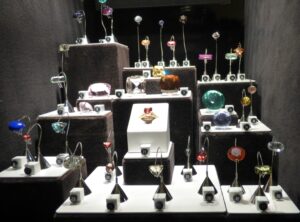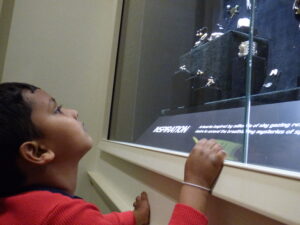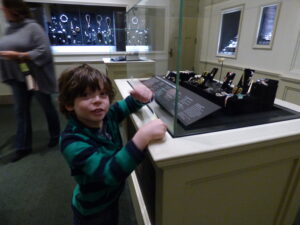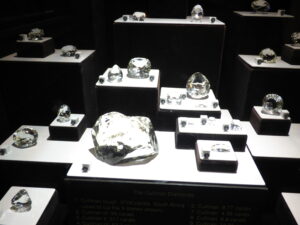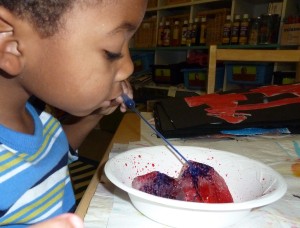Today, our class took our first field trip to the Hillman Hall of Minerals and Gems to learn more about what types of materials are used to make jewelry. As we walked through the exhibit, the students noticed the many similarities and differences between the various rocks and gems. Some were smooth and round while others were rough and jagged. There were many different colors and some specimens had several types of crystals existing on one rock. We learned that some rocks come from cooled lava and others come from sand. We even got to see some rocks glow under a UV light and were surprised to see that they glowed different colors. We also had a chance to see what the gems look like when they are polished and cut so that they can be used for jewelry. Many students were surprised how many different types and colors there were.
While the trip helped the children to see the variety of materials that are used to make jewelry, it also opened the door for new questions for us to answer. Where can you find gems other than in caves? What are the gems made from? How do they cut the gems? How do they get the gems to stay inside the jewelry? These are all wonderful questions that we hope to answer as we move forward in our study of jewelry.

